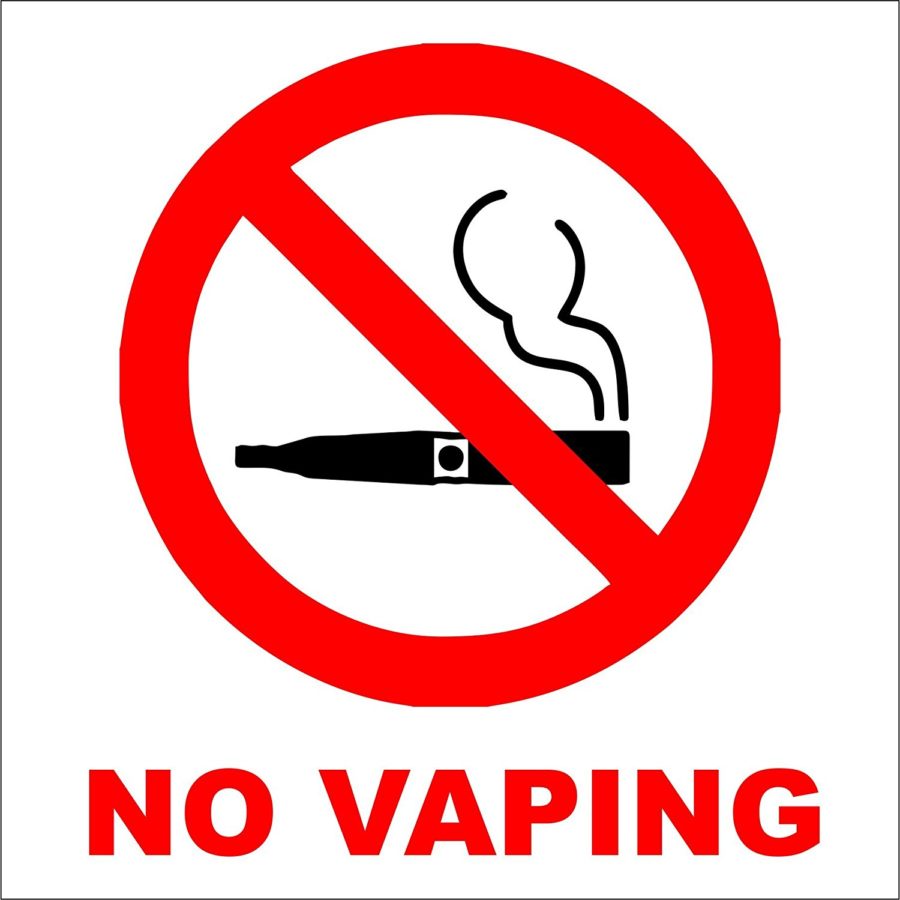SBRHS Faces Vaping and Juuling Problem
May 20, 2018
Students, teachers, and administrators all agree the epidemic that is sweeping the nation at large has now found its way into the walls of Somerset Berkley Regional High School: vaping and Juuling.
“It’s a problem in that we know it’s hurting people and we don’t want that,” David Lanczycki, the principal of SBRHS, says.
There have been 27 vaping and Juuling incidents this year alone that have been caught by the administration.
The vaping and Juuling problem first arose at SBRHS during the previous and current school years. At first, students were primarily vaping, but recently students have turned to Juuling. According to a school-wide survey that was conducted over the course of five days with 289 responses, 11.5% of students answered that they had vaped on school grounds before. However, 86.8% of students that responded said they had witnessed students vaping while in school.
The reason for the large discrepancy in data could be the wishes of the students who responded to prevent potentially incriminating themselves. On the other hand, it is likely that the students who vape a lot are most likely not the people that would answer the survey.
“Kids are thinking they’re safe and they’re not,” Susan Mello, the school nurse, said. “They think it’s just water vapor, but it’s filled with chemicals and can be very dangerous.”
Some of the chemicals in vapes and Juuls are formaldehyde, nicotine, and diacetyl, the latter of which causes “popcorn lung.” Popcorn lung is a lethal lung disease that scars the tiny air sacs in the lungs, which thickens and narrows airways. This only occurs with electronic cigarettes.
Juuls cost around $35 while small Juul pods are even cheaper and only cost $16 for a four-pack. However, Juuling a Juul pod is equivalent to smoking an entire pack of cigarettes with the nicotine concentration in these pods. Although vapes and Juuls seem like a safer alternative to smoking, they both contain nicotine and still cause cancer.
“Kids are looking at it as a cool thing to do and as safer, but most of those e-cigarettes contain nicotine. They think they won’t get hooked on it but they are,” Mello says.
In contrast to vapes that are larger and have a bigger output, Juuls are smaller and are easily concealed and disguised as flash drives.
“I’m worried about kids in school that aren’t making the right choices,” Mello says. “They’re misinformed and we need to educate them.”
However, some of the concerning statistics that were collected from the survey were that 81.9% of students had vaped zero to five times outside of school, but the second highest value for this question was that 11.5% of students had vaped 25 or more times.
Also, even though 44.8% of students responded that they only had zero to three friends that vaped, the second largest percentage at 27.3% said that they had 11 or more close friends that vaped.
The high school has changed its policy for dealing with students that are caught vaping on school grounds for next school year. However, this school year, the policy for a student getting caught with possession of a vape is a detention while the punishment for getting caught for vaping is a Saturday school.
Next year, the consequences for possession and use are the same: a Saturday school.
Lanczycki says that if a student sees another student vaping, they should say something to an authority figure. However, according to the survey, 62.2% of students who responded said that they have never spoken up and confronted someone, whom they know has vaped, about the dangers of doing it.
Lanczycki also says that if students find a vape, they should bring it to an authority figure and report it. From there, it will be destroyed.
The administration is also putting out information in the school newsletter each month to educate parents and students about the dangers of vaping and Juuling.
“It’s gone up over the last one or two years and it’s come to a point where I dedicate almost a page and a half in the newsletter to it,” Lanczycki says.
However, students and teachers believe that the punishment should be stricter for students who are caught with a vape or are vaping in school.
“Your punishment should reflect the fact that you were doing something illegal, not only by vaping on school grounds but you are underage and should not legally have that device,” Catherine Casey, a senior at SBRHS, says.
Instead, students think that the administration should place people outside of the bathrooms more rigorously, as teachers are already stationed there now but often get pulled away to act as a substitute for another class. Another possibility that students considered is narrowing down the number of bathrooms that are open to students.
Other students proposed instituting bathroom logs so students would have to sign in and out on a sheet of paper. This way would make it easier to identify students who were most likely vaping, as they would usually go to the bathroom many times throughout the day and often for long periods of time.
Another possibility that students and teachers have considered is putting vape detectors in the bathrooms. Each vape detector would cost $250, combined with the roughly 14 school bathrooms, would come to a total of $3,500. However, Lanczycki says that putting in vape detectors is not the best option because they are too expensive and students may attempt to rip them off the bathroom walls or destroy them.
Mello is trying to be proactive with the issue by trying to get the permission to send a vape or Juul, once confiscated, to be tested to see what contents are actually inside it, since the vapor could easily be laced with drugs.
Lanczycki says that it is hard to tell whether or not the policy has helped decrease the number of students vaping in school. This is because not only are students caught in waves — sometimes a lot are caught in one period of time while there are other times when some are not caught at all — but also because it is so hard to catch them.
“It’s difficult to actually catch them in the act,” English teacher Nicole Copeland says. “As a teacher, I can’t go in the stall with the student so all I can do is speculate about the student vaping. And by the time I get down [to the bathroom] or another authority figure gets down there, it’s over and done with.”
Catching students vaping or Juuling is difficult primarily because they do these things in the school bathrooms, where cameras are forbidden and authority figures of the opposite sex cannot enter.
“You are kind of limited to what you can do,” Lanczycki says.
However, some students are beginning to vape in classrooms as well as in the bathrooms. Lanczycki says that teachers need to be more aware and other students need to help teachers out.
“It’s coming to the point where they’re not even waiting to go to the bathroom to do it. They’re now just trying to show up a teacher; it’s not a need,” Lanczycki says.
SBRHS junior Ryan Silverman says that one time his history class went down to the cafeteria because their teacher was absent that day. There were a few teachers out and not enough substitute teachers, so a few other classes were also in the same location. Even though there were multiple teachers supervising, Silverman saw one student from another class sitting in the corner of the cafeteria vaping. Afterward, the student waved the vapor away with his hands.
“And this was in the cafeteria where there’s a teacher or substitute supervising! This kid was just doing it out in the open, not even in the bathroom,” Silverman says.
Silverman also saw that someone had posted videos of themselves and their friends vaping on their social media account on multiple occasions.
A sophomore, Xavier Aguiar, says that one time he was in the stall in the bathroom and students were passing Juul pods out to one another and selling them. Also, just the other day, he was waiting for a stall in the bathroom and a student walked in and asked Aguiar if he had a Juul pod. After Aguiar said no, the student simply walked out of the bathroom.
“He walked right out without even doing anything else,” Aguiar says. “All he did was go in there to ask that.”
While on lunch duty one day, Copeland went into the girl’s bathroom after another adult had been in there and said there were five girls in a stall. Because Copeland thought that was odd and because it is typical for students who vape to do so all in the same bathroom stall, she asked what they were doing.
“When they came out they were very defensive and they said that one of the girls was having a feminine emergency, and they left without incident. What are you supposed to do?” Copeland says. “If I called the office the girls would have said the same thing.”
However, Copeland now has vice principal Susan Brelsford’s phone number so she can let her know if there is an incident on the spot.
“You know smoking is bad for you; that’s why we have the lowest smoking rates out of any generation. But we’re still falling prey to big companies’ plans to get people addicted to nicotine so they buy their products,” Casey says.
Copeland says that she feels like the vaping and Juuling problem has deprived many of her students of the right to a clean bathroom and has impacted the well-being of her students.
“I have students who don’t use the bathroom all day. I have kids who are locked in the stalls when they’re supposed to take a test,” Copeland says. “I don’t think kids should be afraid to use the bathroom.”
While some students feel that the vaping issue will never be resolved, others believe that we will eventually overcome it.
“It’s slow change but you have to keep putting that information out,” Lanczycki says. “Eventually people will keep hearing it long enough and loud enough that it starts to internalize.”




Savannah M • Oct 1, 2018 at 8:12 AM
If you don’t want the students to smash the boxes, isn’t there a way you could attach them to the ceiling and obviously away from the toilets because a kid could stand on it to try and reach it. When someone vapes it goes up into the air and even if the detectors are on the ceiling, shouldn’t it be able to detect the vapors?
Mason piques • May 29, 2018 at 10:39 PM
This really isn’t that hard to deal with the kids travel in packs the school has cameras where u can see everywhere they go between periods as groups ex specially 2nd floor cause it has the least protection
And pulling them into the office isn’t gonna do anything when searching they switch with a friend so they have no evedence